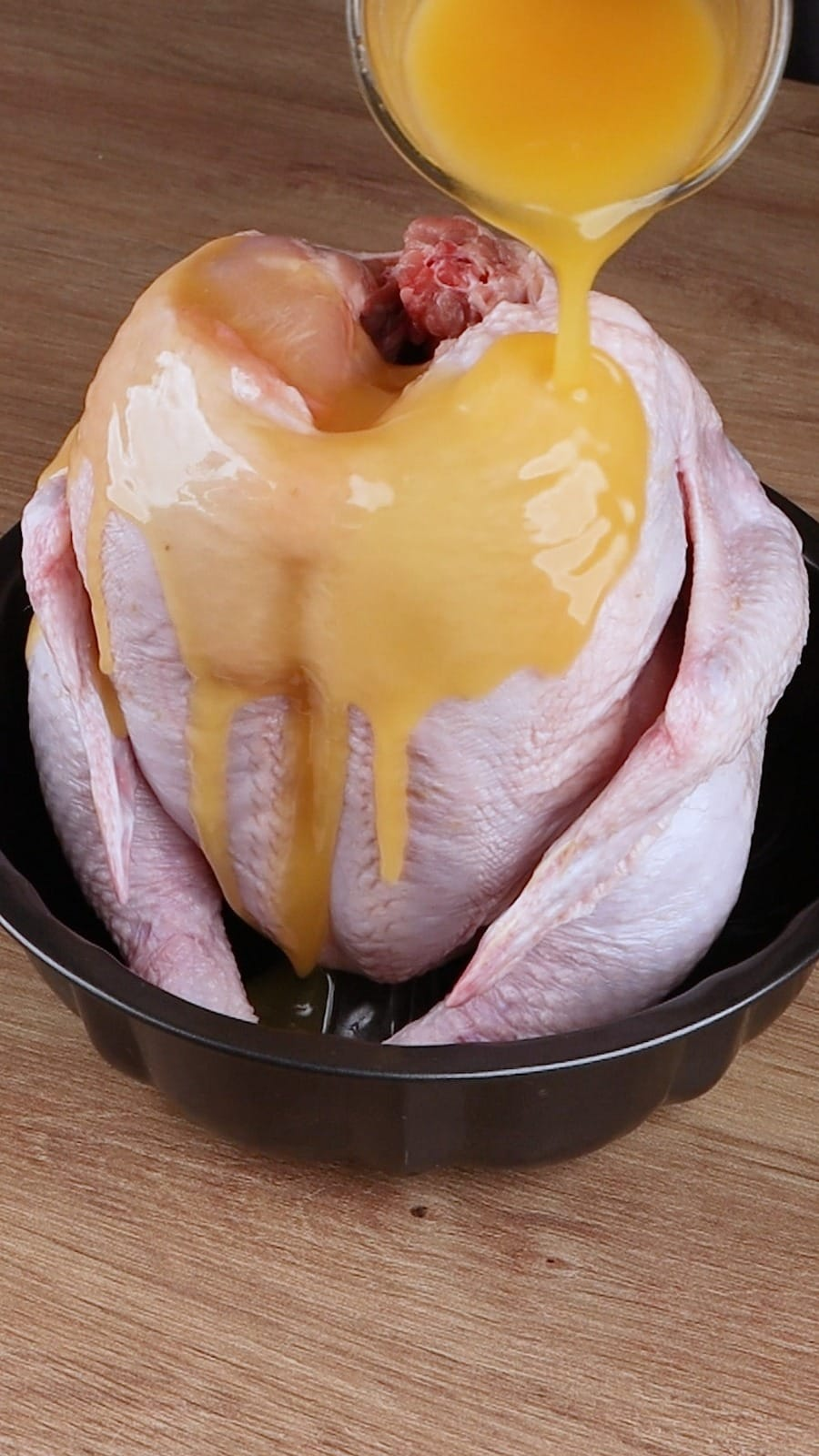ADVERTISEMENT
1. Prepare the Chicken
– Preheat the Oven: Start by preheating your oven to 200°C (400°F). This ensures the oven is hot enough to create a crispy skin.
– Clean the Chicken: Rinse the whole chicken under cold running water and pat it dry thoroughly with paper towels. Dry skin helps achieve that desirable crispy texture.
– Season the Chicken: Rub the entire chicken with 2 tablespoons of olive oil, making sure to coat all surfaces. Season generously with salt and pepper, including the cavity.
– Stuff the Cavity: Place the smashed garlic cloves, orange slices, and thyme inside the cavity of the chicken. This will infuse the meat with aromatic flavors from the inside out.
– Tie the Legs (Optional): For even cooking and a neat appearance, you can tie the chicken legs together with kitchen twine.
2. Make the Orange Glaze
– Combine Ingredients: In a small saucepan over medium heat, combine the following:
– ½ cup fresh orange juice
– ¼ cup honey
– 2 tablespoons soy sauce
– 2 tablespoons butter
– 1 teaspoon grated orange zest
– ¼ teaspoon ground ginger (if using)
– Heat the Glaze: Stir the mixture continuously until the butter has melted and all ingredients are well combined.
– Simmer: Allow the glaze to simmer for 3–5 minutes, stirring occasionally. This helps to thicken the glaze slightly and meld the flavors together.
– Set Aside: Remove the saucepan from heat and set the glaze aside.
3. Apply the Glaze and Roast
– Place in Roasting Pan: Place the seasoned chicken into a roasting pan or oven-safe skillet, breast side up.
– First Glaze Application: Pour half of the orange glaze over the chicken, using a brush or spoon to ensure it’s evenly coated.
– Roast the Chicken: Put the roasting pan in the preheated oven and roast for 60–90 minutes. Cooking time may vary based on the size of the chicken.
– Baste Midway: About halfway through the cooking time (around 30–45 minutes), baste the chicken with the remaining glaze. This enhances the flavor and promotes a deeper golden color.
– Check for Doneness: The chicken is done when the internal temperature reaches 74°C (165°F), or when the juices run clear when the thickest part of the thigh is pierced.
4. Rest and Serve
– Remove from Oven: Carefully take the roasting pan out of the oven. Be cautious of hot juices and steam.
– Let it Rest: Allow the chicken to rest for 10–15 minutes. Resting is crucial as it lets the juices redistribute throughout the meat, resulting in a juicier chicken.
– Carve the Chicken: Using a sharp knife, carve the chicken into desired pieces—breasts, thighs, legs, and wings.
– Serve: Arrange the chicken pieces on a serving platter. Garnish with the roasted orange slices and fresh thyme sprigs if desired. Serve with your favorite sides.
Tips and Notes
– Choosing the Chicken: Opt for an organic or free-range chicken for the best flavor.
– Fresh Orange Juice: Using freshly squeezed orange juice enhances the citrus flavor significantly compared to store-bought juice.
– Additional Glaze: If you prefer extra sauce, double the glaze recipe and reserve half to serve alongside the chicken.
– Vegetable Bed: Roast the chicken on a bed of root vegetables like carrots, potatoes, and onions for a built-in side dish.
– Leftovers: Store any leftover chicken in an airtight container in the refrigerator for up to 3 days. The meat makes for delicious sandwiches or salads the next day.
Serving Suggestions
– Side Dishes: Complement the orange-glazed chicken with sides like roasted asparagus, garlic mashed potatoes, or a fresh green salad.
– Wine Pairing: A Chardonnay or Pinot Noir pairs wonderfully with the citrus and savory notes of the dish.
